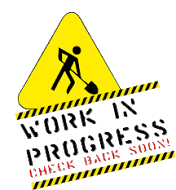The riots, looting, and arson in Baltimore are yet another case of what began as a demonstration against alleged police misconduct but turned into violence. It was not political protest. People who want better treatment from the police don’t set fire to retirement homes, try to break into ATM machines, or burn down drug stores. These things happened in Baltimore because that is what excited blacks do when they gather in the streets in large numbers.
Any gathering of blacks is a potential riot. For three years in a row, from 1990 to 1993, blacks rioted when the Chicago Bulls won the NBA championship. In 1992, they burned 14 buildings, looted countless stores, and injured 95 police officers. In 1993–despite thousands of extra police–they looted dozens of stores, burned scores of cars and killed two people.
It was the same story in Detroit when the Detroit Pistons won the NBA title in 1990: blacks looted, burned police cars, and killed seven people.
These days, it doesn’t even take a specific event to send a crowd of blacks into the streets. A few enterprising youths with Twitter accounts can whip up a “flash mob” most any time they like.
Why do blacks behave this way? Young men of all races are savages, and young blacks are the hardest to tame. Low IQ, high testosterone, and a short time horizon make them the perfect tinder for disorder. We see this in every country that has a black population.
American blacks are especially likely to riot because they’re always told that bad white people are grinding them down. As Jesse Jackson pointed out yesterday in Baltimore, downtown is glittering but there are thousands of abandoned houses on the black West Side. “Why can’t the West Side get the same things downtown gets?” he wanted to know. Blacks are convinced it’s because of “racism,” and looting chain stores and burning police cars–like the knockout game–is revenge.
What should we do about this?
Mayor Stephanie Rawlings-Blake of Baltimore did exactly the wrong thing. She said law enforcement was “a balancing act” and so “we gave those who wished to destroy space to do that.” When critics roared, she claimed she hadn’t said that, but she couldn’t deny the video evidence.
Historically, Americans have taken a different approach to looting.
The morning after the San Francisco earthquake of 1906, Mayor Eugene Schmitz put up notices all over town warning that:
The Federal Troops, the members of the Regular Police Force and all Special Police Officers have been authorized by me to KILL any and all persons found engaged in Looting or in the Commission of Any Other Crime.
Reports of the number of looters killed vary from a dozen to a hundred.
In December, 1913, the San Antonio River overflowed, and there was serious flooding in central Texas. The order issued to the state police was, “Shoot all looters, and shoot to kill.”
Until the 1985 Supreme Court case of Tennessee v. Garner, American police generally had the right to shoot a “fleeing felon,” including looters. Ever since Tennessee, however, police may not shoot unless they believe the fleeing felon poses a threat of violence.
It would be a mistake, though, to think that police were blazing merrily away at looters until 1985. Far from it. One of the most famous “shoot to kill” orders, attributed to Mayor Richard Daley in 1968, was pure bravado. On April 5, the day after Martin Luther King was shot, there were riots in Chicago as well as 100 other US cities. On April 15th, well after the violence was over, Mayor Daley made this extraordinary statement:
I have conferred with the superintendent of police this morning and I gave him the following instructions, which I thought were instructions on the night of the fifth that were not carried out. I said to him very emphatically and very definitely that [he should issue an order] immediately and under his signature to shoot to kill any arsonist . . . because they’re potential murderers, and to issue a police order to shoot to maim or cripple any arsonists and looters–arsonists to kill and looters to maim. . . .
I assumed any superintendent would issue instructions to shoot arsonists on sight and to maim looters, but I found out this morning this wasn’t so and therefore gave him specific instructions.
Even though the looting had stopped, Police Superintendent James Conlisk was hesitant to follow Daley’s order, saying, “I’ll tell you one thing: I’m not going to issue an order that’s going to result in a federal indictment.” Indeed, Attorney General Ramsey Clark criticized Mayor Daley for the order, even though it was never officially transmitted to the force and no one was shot as a result.
Even if Mayor Daley’s shoot-to-kill order was all bluster, ordinary Americans liked it. His office reported that mail from the public was running 15-to-1 in favor of shooting looters.
There was another famous “shoot to kill” order in 1977, after flooding in Johnstown, Pennsylvania. When Mayor Herb Pfuhl heard reports of looting he told police to kill looters, and as soon as the word got out, the looting stopped. FBI director Clarence Kelly defended the order but leaders of the Pennsylvania state police said their policy was to shoot only when someone’s life could be at stake–the policy that became mandatory after Tennessee v. Garner.
After the 2003 invasion of Iraq, chaos erupted in Bagdad and there were reports that American troops had orders to shoot looters, but the Pentagon immediately denied them.
A few police officers say that after Hurricane Katrina wrecked New Orleans in 2005 there were orders to shoot looters. A police captain named Harry Mendoza says that the police department’s number-two man, Warren Riley, told him to “take the city back and shoot looters.” Mr. Riley denies this. Some newsmen claim to have seen a grainy video in which a police captain named James Scott tells a few dozen officers that “we have authority by martial law to shoot looters.” There were only rumors that New Orleans was under martial law; no such order was ever given.
Even if police do not have the right to shoot looters, property owners do. Few people remember that Hurricane Katrina devastated parts of Mississippi, but there was very little looting. Governor Haley Barbour explained why: “The reason, I think, was because I said people could shoot looters. I think it was a real deterrent.” Mississippi does not have restrictive gun ownership laws, and many citizens are armed.
The armed citizen has been nowhere to be seen in Baltimore, perhaps because Maryland has some of the most restrictive gun laws in the country and it is virtually impossible to get a license to carry a weapon. However, it is still legal for owners to defend their property. Why is no one in Baltimore brandishing guns in the face of looters?
At the time of the 1992 riots in Los Angeles, it was only Koreans who organized armed patrols to protect property. White people apparently don’t have to stomach for it any more, and Baltimore doesn’t have a Korea town.
Yesterday, a CVS drug store was looted and burned in Baltimore, along with many other businesses. Most insurance policies don’t cover damage from war or riots, so some owners will suffer catastrophic loses. It would no doubt be too much to expect the CVS store manager to spend the night behind the counter with a 12-gauge. That would actually take guts rather than a bachelor’s degree in business. But why didn’t businesses call in private security–or even some local NRA members or Oathkeepers–to fight off the chaos?
There are few images more disturbing than videos of looters sacking stores while the police do nothing. There are few images more disturbing than “youths” wrecking and burning police cars–the clearest possible symbols of law and order. If the police are unwilling to protect even their own property, we sure can’t count on them to protect ours.
But are the police unwilling or are they just obeying orders? A 2005 poll at a police-oriented website gave interesting answers to the question: “Would you be willing to shoot a looter during martial law?” A sample of 193 registered members gave the following replies:
Yes, absolutely: 40 percent.
Yes, but only if looters were taking dangerous items: 26 percent.
No. Would follow the usual criteria for using deadly force: 33 percent.
Absolutely not: 2 percent.
Only a minority of police officers take the traditional view—and now we have a new tradition. Miss Rawlings-Blake was widely criticized for talking about giving rioters a safe space for rioting, but she shouldn’t have been. All she did was put into words what is de facto policy all across the country.
The authorities in Missouri had weeks to prepare for the announcement that the grand jury was not going to indict Officer Darren Wilson for shooting Michael Brown. Governor Jay Nixon called up the National Guard ahead of time–but it made no difference. The next day’s CNN headline was, “Fires, Chaos Erupt in Ferguson After Grand Jury Doesn’t Indict in Michael Brown Case.” Black rioters got their space for rioting, just as they always do.
Blacks will keep rioting for as long as the American authorities and the American people give them that space.
See also We Used to Shoot Looters #1
This page is We Used to Shoot Looters #2
 Racism is Love
Racism is Love 



